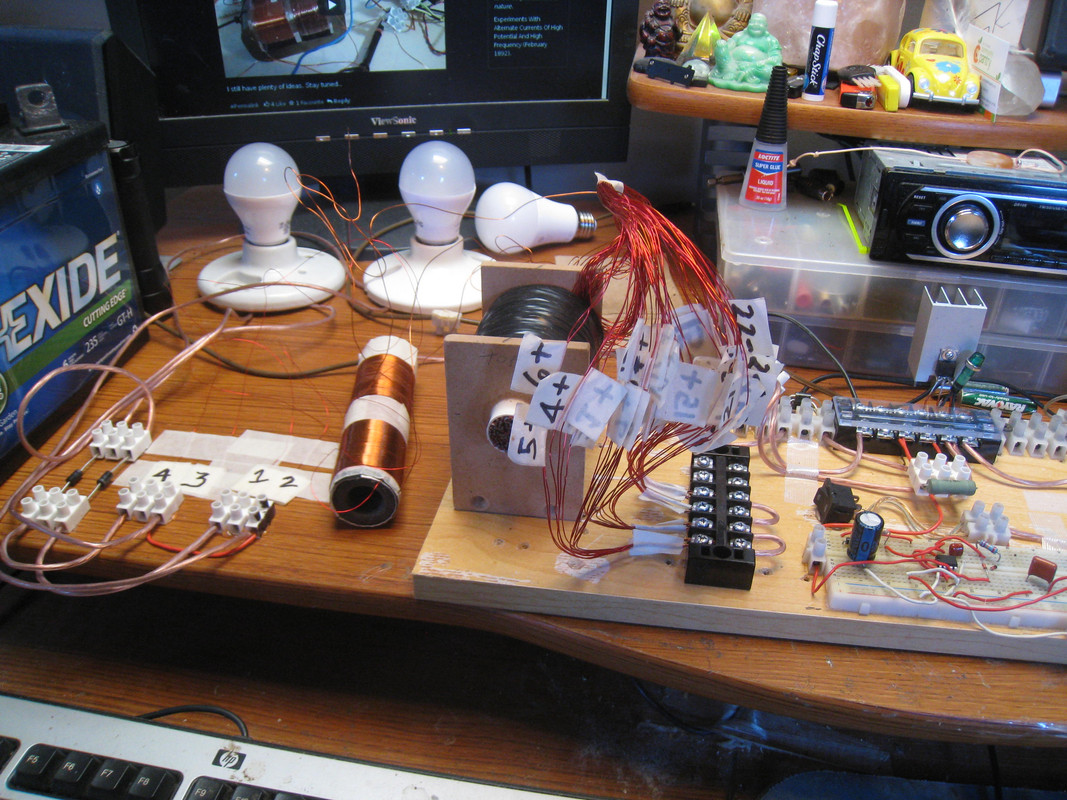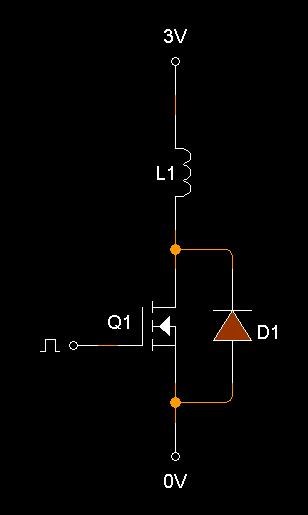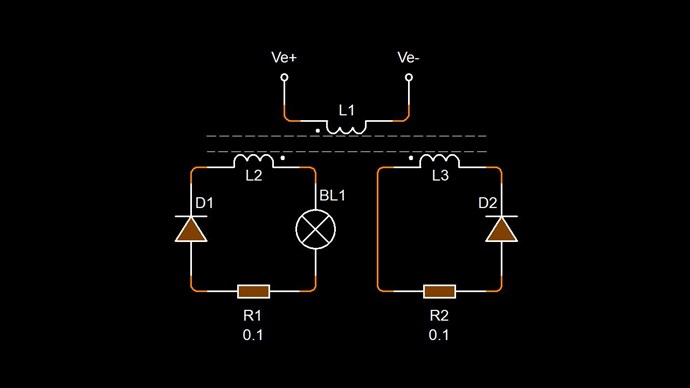OriginalSkywatcher
posted this
31 December 2019
- Last edited 31 December 2019
Hi wistiti, good to hear from you.
Yes, using the 555 timer with adjustable duty cycle works well.
What I noticed with my setup at the moment, (and of course it using one primary coil over half the core or over only one partnered coil), is that when pulsing the primary with the partnered coils in parallel as outlined by chris, with no load attached to the parallel output.
It seems the input increases a little, perhaps the coils are not perfectly matched and one is feeding into the other and causing a load to be seen by the input.
I will try and match those coils soon though.
However, I tried various partnered coil wiring methods and came upon one that did not change the input current when connected without load and with load, the input current decreases.
Also, my partnered coils are wound as chris suggests is best, counter clockwise and clockwise.
The wiring method used is placing the partnered coils in series, meaning, taking power from the wire end at each end of the core and connecting the partnered coils at the middle of the core, where the coils buck each other.
A standard, 6 watt, 120vac led bulb is used as load at the partnered coils output.
Then, a diode is placed across the second partnered coil, (with proper orientation to light the bulb brightly and cause a decrease in input current) the partnered coil that is NOT under the primary coil, so the coil that is furthest from the primary pulsing coil.
Without the 1N5408 diode across the outer partnered coil, in whatever orientation is needed, the led bulb brightness is cut in half and the input current increases a little.
Though with that diode in place, the led bulb brightness doubles and the input current decreases a little more below no-load input current.
peace love light

















---open-tesla-research.jpg?width=20&crop=0,0,20,20)


